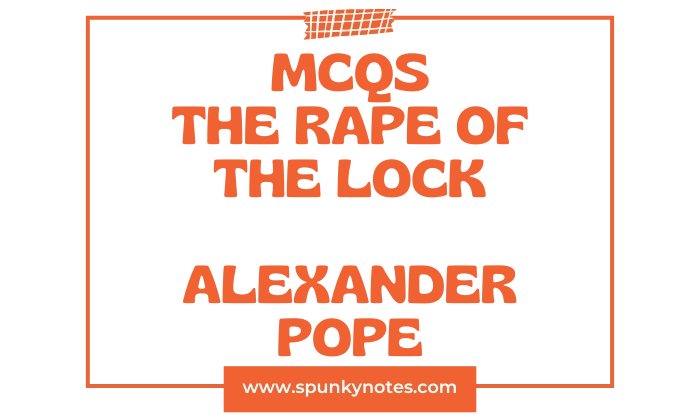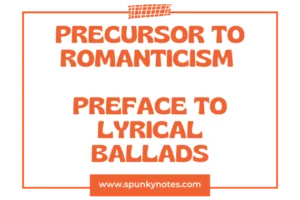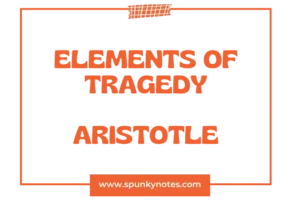

Estimated Reading Time: 17 min
Before you begin the quiz, ensure you have a complete comprehension of the summary of The Rape of the Lock by Alexander Pope.
The Rape of The Lock MCQs
CANTO I
1. What does Pope explicitly state as the subject of his poem?
A. Mighty battles and heroic deeds.
B. Mighty contests from trivial things.
C. The history of ancient empires.
D. The love story of Belinda and Caryll.
2. To whom does Pope say the opening verse is due?
A. Belinda and Sir Plume.
B. The Muse and Milton.
C. Caryll and Belinda.
D. Homer and Virgil.
3. What specific event prompted Pope to write The Rape of the Lock?
A. A major war between two families.
B. Lord Petre cutting a lock of Arabella Fermor’s hair.
C. A dispute over church doctrine.
D. A grand royal ball.
4. What was Pope’s stated purpose for writing the poem?
A. To impress the Queen.
B. To become a famous poet.
C. To make a jest of the incident and laugh the families together again.
D. To criticize all of English society.
5. What kind of poem is The Rape of the Lock described as?
A. A simple literary elegy.
B. A straightforward epic.
C. A tragedy.
D. A mock-heroic poem.
6. In the opening scene, what does Belinda’s lapdog, Shock, do?
A. Barks loudly.
B. Gives himself the rowzing Shake.
C. Brings her the mail.
D. Jumps on the bed.
7. What does Belinda see upon waking, if report says true?
A. Her reflection.
B. A golden crown.
C. A Billet-doux.
D. A lock of hair.
8. What is Belinda’s dressing table described as in Canto I?
A. A simple wooden table.
B. A place of chaos.
C. A shining Altar.
D. A battleground.
9. What diverse items are found together on Belinda’s toilet table?
A. Jewels and ancient scrolls.
B. Swords and shields.
C. Puffs, Powders, Patches, Bibles, Billet-doux.
D. Books and maps.
10. From what source did Pope invent his “Machinery” of spirits?
A. Greek mythology.
B. Christian theology.
C. The Rosicrucian Doctrine of Spirits.
D. Roman history.
11. According to the Rosicrucians, what are the four elements inhabited by?
A. Humans, animals, plants, rocks.
B. Sylphs, Gnomes, Nymphs, and Salamanders.
C. Angels, demons, saints, and devils.
D. Fire, water, earth, and air.
12. What do “Sprights of fiery Termagants” become after they expire?
A. Nymphs.
B. Gnomes.
C. Salamanders.
D. Sylphs.
13. What do “light Coquettes” become after death?
A. Salamanders.
B. Gnomes.
C. Nymphs.
D. Sylphs.
14. What does Ariel warn Belinda to beware of most?
A. Lost jewels.
B. Man.
C. Falling china.
D. Bad weather.
15. What causes Ariel’s power to expire when he seeks Belinda’s thoughts?
A. An Earthly Lover lurking at her Heart.
B. A sudden storm.
C. A powerful rival.
D. Belinda’s virtue.
CANTO II
16. What does Belinda wear on her white breast?
A. A golden locket.
B. A single rose.
C. A sparkling Cross.
D. A miniature portrait.
17. What famous line suggests forgiveness for Belinda’s “Female Errors”?
A. Her heart is pure, her soul is clean.
B. Her spirit shines, so bright and keen.
C. Her wisdom deep, her mind serene.
D. Look on her Face, and you’ll forget ‘em all.
18. What does the poem claim draws “Man’s Imperial Race”?
A. Great riches.
B. Powerful armies.
C. Eloquent speeches.
D. Fair Tresses / a single Hair.
19. What is the Baron’s initial resolution regarding the locks?
A. To humbly ask for one.
B. To ignore them.
C. By Force to ravish, or by Fraud betray.
D. To admire them from afar.
20. What did the Baron build an altar of to implore propitious Heaven and Love?
A. Jewels and gold.
B. Ancient scriptures.
C. Twelve vast French Romances, neatly gilt.
D. Weapons and armor.
21. What are some of the names Ariel calls his aerial followers?
A. Angels, Devils, Spirits.
B. Nymphs, Dryads, Naiads.
C. Fays, Fairies, Genii, Elves, and Dæmons.
D. Giants, Pixies, Goblins.
22. What major disaster does Ariel warn Belinda might occur?
A. A shipwreck.
B. A frail China Jar receive a Flaw.
C. A political scandal.
D. A lost election.
23. Who is assigned to tend Belinda’s favorite Lock?
A. Ariel.
B. Brillante.
C. Momentilla.
D. Crispissa.
24. What is Ariel himself assigned to guard?
A. Belinda’s fan.
B. Her watch.
C. Her petticoat.
D. Shock.
25. What might restrain a sylph’s flight and clog its silken wings?
A. Strong winds.
B. Sticky honey.
C. Gums and Pomatums.
D. Chains and locks.
CANTO III
26. What is the name of the “Majestick Frame” where the poem’s action largely takes place?
A. Windsor Castle.
B. Buckingham Palace.
C. The Tower of London.
D. Hampton Court.
27. When does the poem state that “Wretches hang”?
A. When the King commands it.
B. That Jury-men may Dine.
C. After a long trial.
D. To make an example.
28. What game does Belinda burn to encounter two “adventrous Knights” at?
A. Chess.
B. Whist.
C. Backgammon.
D. Ombre.
29. Which card is “Spadillio”?
A. The King of Spades.
B. The Queen of Spades.
C. The Two of Spades.
D. The Ace of Spades.
30. What does coffee send up in “Vapours” to the Baron’s brain?
A. Sweet dreams.
B. Feelings of peace.
C. New Stratagems.
D. Visions of glory.
31. Who draws the “two-edg’d Weapon” that is given to the Baron?
A. Belinda.
B. Thalestris.
C. Ariel.
D. Clarissa.
32. What is the “little Engine” that the Baron extends on his fingers’ ends?
A. A small gun.
B. A miniature sword.
C. A pair of tongs.
D. The Forfex (scissors).
33. What happens to the “wretched Sylph” that too fondly interposes before the fatal engine closes?
A. It turns to stone.
B. It is captured.
C. It is cut in twain.
D. It flies away unharmed.
34. Belinda’s screams are compared to shrieks when what happens?
A. Husbands die, or Lap-dogs breathe their last, Or rich China Vessels fall.
B. Kingdoms fall or battles are lost.
C. Children cry or lovers depart.
D. Temples burn or gods are angered.
CANTO IV
35. Which character is described as a “dusky melancholy Spright” who visits the Cave of Spleen?
A. Ariel.
B. Clarissa.
C. Umbriel.
D. Sir Plume.
36. Who are the two “Handmaids” waiting at Spleen’s Throne?
A. Beauty and Grace.
B. Wisdom and Folly.
C. Ill-nature and Affectation.
D. Patience and Despair.
37. What is contained in the “wondrous Bag” given to Umbriel by the Goddess Spleen?
A. Gold and silver.
B. Spells and charms.
C. Sighs, Sobs, and Passions, and the War of Tongues.
D. Laughter and joy.
38. What is in the “Vial” that Umbriel fills next?
A. Sparkling water.
B. Healing balm.
C. Fainting Fears, Soft Sorrows, melting Griefs, and flowing Tears.
D. Ambrosia.
39. Who does Thalestris rage to and bid demand the precious hairs?
A. The Baron’s servant.
B. Sir Plume.
C. A lawyer.
D. The Queen.
40. What is Sir Plume “justly vain” of?
A. His wit.
B. His eloquence.
C. His Amber Snuff-box.
D. His strength.
41. What morning omens does Belinda recall regarding her misfortune?
A. A dream of a storm.
B. A falling star.
C. Patch-box fell, China shook, Poll mute, Shock unkind.
D. A broken mirror.
CANTO V
42. Who enters the scene to deliver a speech promoting “good Sense” and “good Humour”?
A. Belinda.
B. Thalestris.
C. Clarissa.
D. Ariel.
43. What does Clarissa state “Charms strike,” but “Merit wins”?
A. The mind, the body.
B. The heart, the hand.
C. The Sight, the Soul.
D. The fame, the fortune.
44. What do the “Heroes’ and Heroins'” use as weapons in the climactic social battle?
A. Swords and daggers.
B. Words and wit.
C. Fans and Whalebones (petticoats).
D. Snuff-boxes and canes.
45. Who revives the “Beau” with her smile?
A. Belinda.
B. Thalestris.
C. Chloe.
D. Clarissa.
46. What does Jove suspend in his “golden Scales”?
A. Love and hate.
B. Gold and silver.
C. The Men’s Wits against the Lady’s Hair.
D. War and peace.
47. How does Belinda finally subdue the Baron?
A. With a powerful blow.
B. With a magic spell.
C. With one Finger and a Thumb.
D. With a piercing shriek.
48. What “wily Virgin” throws a “Charge of Snuff” at the Baron?
A. Thalestris.
B. Clarissa.
C. Belinda.
D. Chloe.
49. Where is it suggested that the lost Lock has mounted to?
A. The underworld.
B. The Baron’s chamber.
C. The Lunar Sphere.
D. A secret hiding place.
50. What is the ultimate fate of Belinda’s Lock, as promised by the Muse?
A. It will be returned to her head.
B. It will turn to dust.
C. The Muse shall consecrate it to Fame, and inscribe Belinda’s Name mid’st the Stars.
D. It will be forgotten.
Brief Overview
The Rape of the Lock by Alexander Pope is a mock-epic poem that humorously portrays a minor social conflict. It is based on a real incident where Lord Petre cut a lock of hair from Arabella Fermor without her consent.
Pope transforms this small event into an epic tale, using grand language and classical references to satirize the vanity and superficiality of aristocratic society.
The poem follows Belinda, the fictional version of Arabella, who is presented as a beautiful and fashionable woman protected by supernatural beings called sylphs. Her beauty symbolizes society’s obsession with appearance.
When the Baron cuts Belinda’s hair, it is treated like a heroic conquest. Belinda reacts dramatically, highlighting the exaggerated values of the upper class.
Pope uses wit, heroic couplets, and epic conventions to expose how trivial matters are blown out of proportion. Through satire, he critiques the emptiness of social rituals and the lack of deeper moral values in aristocratic life.
Ultimately, the poem blends humor and elegance to emphasize how society elevates vanity to epic proportions.


